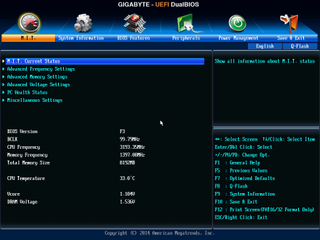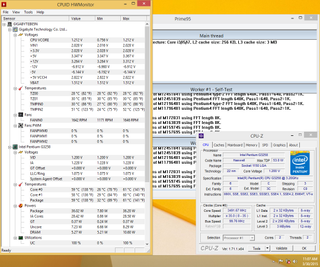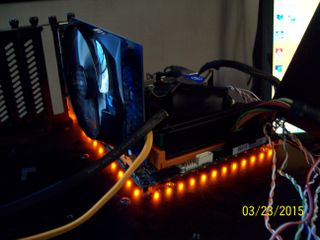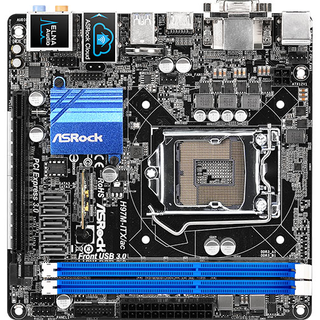Why you can trust Tom's Hardware
Gigabyte B85N Phoenix-WiFi
This board has one notable layout difference from the other two. See where the front-panel header is, high on the right edge? That could be good or bad, depending on your case and how you want to route your wires. In a full ATX or microATX chassis, you may wish to run your front-panel wires under the motherboard if wire length, grommet or mounting-hole placement won't let you route them behind the motherboard tray. You can also clearly see the mSATA connector, at 10 o'clock from the CPU, just below the audio jacks. It includes the hold-down screw too, which I've seen forgotten (that screw is already on the board). In the box, you get two SATA cables, the motherboard driver CD, a separate CD for the Wi-Fi card, an I/O plate and the wireless card's antenna, which sits on your desk.



Perhaps due to some additional features, this board’s layout is somewhat busy. Among other anomalies, the battery is not held in a clip, but is wrapped and stuck to the back of the USB3.0 and LAN connector housing. Writing on the wrap indicates it is a CR2032, but don’t plan on dropping in to a Wal-Mart or Home Depot if you need a replacement. Similar to CMOS batteries in many laptops, it is connected to the board with a two-pin header, so you’ll need to get one with the same polarity, or do some creative slicing and re-taping. The CLR_CMOS pins do not have a jumper cap, and are not near the battery (or its pins), but instead are two-thirds up the right edge, behind the front panel header, which is there too instead of being in its usual place on the bottom left. If there isn’t a cable-management hole nearby, you may want to run your front panel wires under the motherboard before you mount it, to keep them hidden. Just above the front panel header on the right edge is a COM port header. If you need an actual serial port though, it is a separate purchase. The chassis and CPU fan headers, both 4-pin PWM, are below that in the center of the right edge. On the left side of the board, just below the rear panel audio connectors is a mSATA connector. This connector is rated for 6Gb/s. The hold-down screw is included, and is pre-installed on the board. There are three white SATA 6Gb/s connectors, one on the front edge, and two behind the RAM slots. One of the latter is almost up against the PCIe slot, but the side where a locking clip would be is not obstructed. The RAM slots have locking levers on the right side only, so there’s no clear indication that RAM has been fully seated. The front edge has a USB3.0 header and a USB2.0 header to the left of the previously mentioned SATA 6Gb/s connector. On the other side of that is the single black SATA 3Gb/s connector, then the 24-pin power connection. All capacitors are solid, and the board also uses ferrite-core chokes.
Here's the main UEFI screen, giving the familiar overview:

The Advanced Frequency Settings page seems to have a bug in it; the reported frequency is not consistent with what the multiplier suggests.

With a 35x multiplier, why is it showing 3.99GHz? This produced the following results, showing the expected ~3.5GHz minor overclock (and not much effect on temps):

I decided this board needed a bonus picture, even if it's low-quality:

All around the edges are orange LEDs. Turning them off doesn't even register a 1W difference in power consumption. They can be set to full brightness (as they are here), 50-percent brightness and/or pulse mode, which is more like breathing. Alternatively, you can turn them off entirely. The effect is interesting, though it does force us to again ask who might want to buy this board? It is rather anomalous, sucking down more juice and running hotter than the other two boards in our round-up. Moreover, it doesn't facilitate RAID, though it does have enough ports to support a backup drive. Or, you could use Windows' software-based RAID 1.
What this board definitely offers is amazing network performance. Look at the upload speeds, especially from the wireless controller. Media-serving HTPC, anyone? Despite higher power and heat, it didn't impose higher (or noisier) CPU fan speeds. We're still looking at less than 20W of difference, which might not matter to some enthusiasts. But if you need the network performance and number of ports this board offers, it may be just the ticket.
Stay on the Cutting Edge
Join the experts who read Tom's Hardware for the inside track on enthusiast PC tech news — and have for over 25 years. We'll send breaking news and in-depth reviews of CPUs, GPUs, AI, maker hardware and more straight to your inbox.
-
PaulBags Fix ya damn website tom's, why take up 60% of the screen with a "recommended article" while I'm trying to read this one, with a close button that doesn't work? Android 4.4.2, default browser, desktop mode.Reply -
Firion87 Dear Tom's. I own the Gigabyte B85N Phoenix for 2 months. Never measured the power draw but I'm using an Intel m-sata 530 SSD and that thing gets hot! I build some sort of duct above it with a 40mm fan to try cooling that thing from 56 degree Celsius to at least 48 which still seems a lot to me. The duct extends and covers also the chipset which stays nicely around 28 degrees. There's nothing else negative to report from this board. Everything works.Reply -
DonkeyOatie Thanks for the validation.Reply
http://www.tomshardware.com/forum/id-2625445/build-log-consolidated-middle-school-builds.html
My students have been building successfully with the ASRock H97 ITX/ac and it does everything you say. What challenges there are, like getting those tiny connectors on the WiFi card to fit into the sockets on the antenna wires, add texture, and frustration, to the building experience.
All customers are satisfies at the moment and we are trying a Z97E ITX/ac build now.
The i5 4460/GTX970 configuration is being updated to a GTX 980 and 4k monitor. -
akula2 Interesting article.Reply
Some folks may consider to pay a bit more for AsRock Rack boards if they are looking for personal or enterprise-grade storage (NAS server/box) based on ZFS. E.g., a typical home box config:
1) Core i3 4360T (35W) + C226M WS uATX board + 8GB ECC RAM -
Onus It looks like prices have changed again since I tested these boards.Reply
The more I think about it, the more I like the H97 chipset; the only thing you really give up is overclocking "K" CPUs. In the old days, you almost had to overclock to get good performance, but CPUs are so much faster today it seems less of a requirement unless you're down in Pentium territory; but that one can be overclocked on H97. -
dvanburen Reply15857592 said:Thanks for the validation.
http://www.tomshardware.com/forum/id-2625445/build-log-consolidated-middle-school-builds.html
My students have been building successfully with the ASRock H97 ITX/ac and it does everything you say. What challenges there are, like getting those tiny connectors on the WiFi card to fit into the sockets on the antenna wires, add texture, and frustration, to the building experience.
All customers are satisfies at the moment and we are trying a Z97E ITX/ac build now.
If you can justify the additional cost you should like the Z97E ITX/ac. I have both of these boards in different builds. While the H97M ITX/ac is a nice board, the Z97E ITX/ac is nicer all around. For me it is about a $30 USD premium.
-
Onus I built a rig on the Z77E-ITX, and it was my primary for months (its name was Gypsy, and true to form, it eventually wandered off to join the Circus; I sent it to some friends who have six minions). It was a nice board, and I could see buying another one for the i5-3570K from a different build that is now idle. It had a mSATA slot on its underside for a SSD. One gotcha: The mSATA screw was not included, and if whatever you used was long enough to short to the case, the board would not boot; a piece of electrical tape fixed that.Reply
-
dvanburen It's interesting that their use in an HTPC was mentioned in the article. I'm using an H97M ITX/ac for just this purpose. However, I don't think most will use the onboard audio as I believe HDMI will be used in the majority of HTPC builds. To be honest, the only reason I went this route is because I already have a very nice case with a VFD, a decent PS, and drives. If I was to start from scratch I would probably use something like the MSI Cubi. That is, if I could live without the VFD...Reply -
Karsten75 Could you only get boards from ASRock and Gigabyte? I'm not too sure I understand testing two much older chipsets against a more modern chipset. The price points are also way off. Why pay as much for a B85 chipset motherboard as for a H97??Reply -
Onus All the "big boys" were invited to send boards. Only ASRock sent any; two. Some specifically expressed disinterest. Tom's bought the Gigabyte board.Reply
I'm working on more boards now. Once again, ASRock has sent two. I bought one, and I believe Tom's is buying others.
As to the prices, they've jumped around in the last month or so.
One thing I think the article showed is that the price jump from H81 to another chipset buys quite a bit.
As to B85 vs. H97, it depends on your uses. In this case, Gigabyte's superior network adapters are worthwhile if you don't care about specific H97 features like RAID.


